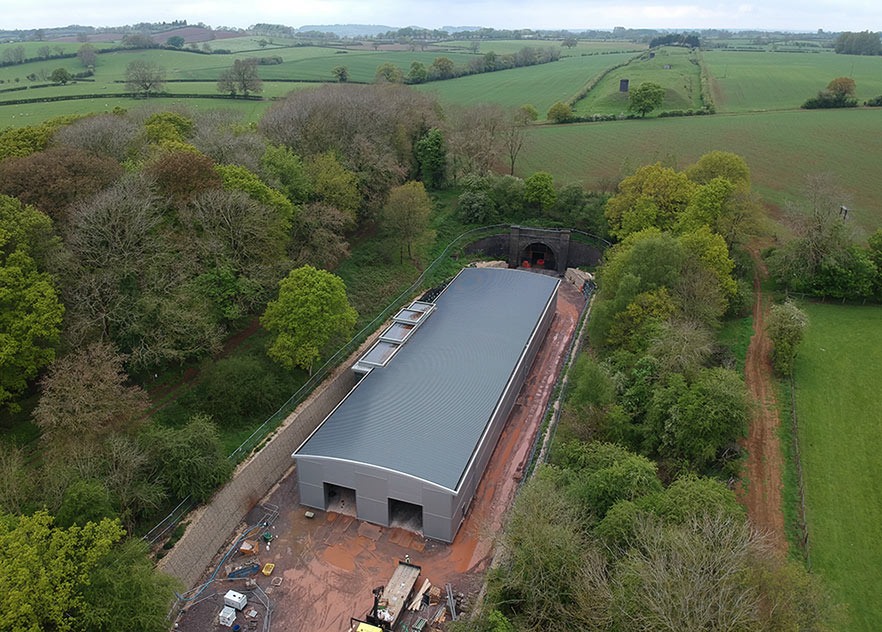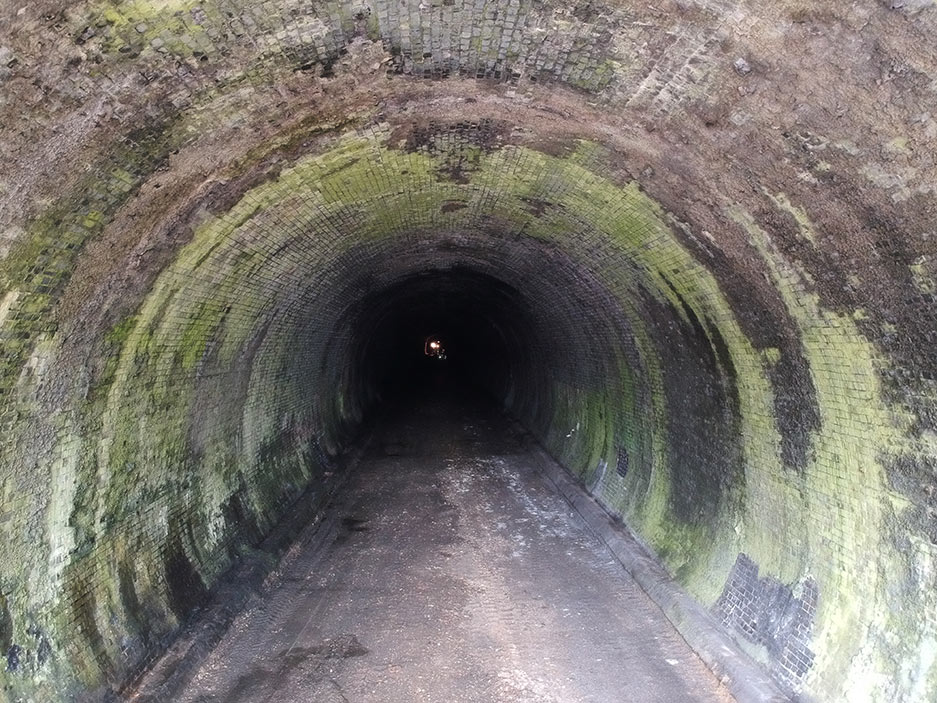Challenges overcome in tunnel transformation project 30 Jan 2020
The transformation of a derelict Victorian railway tunnel into a premier full-scale vehicle testing facility continues to progress in Northamptonshire, UK, despite some unexpected delays.
The two-storey, steel-framed Catesby Aero Research Facility (CARF) building outside of the tunnel is now largely complete, although it is not fully fitted out yet. The road services are in and the road junctions have been built. Repairs have also been made to a bridge on the project site and that is due to reopen in February 2020.
However, there have been some obstacles that have hindered progress as planned. Delays have included acquiring the lease, getting the legal details agreed with Daventry District Council and Highways England, and environmental concerns.
“Ecology was probably our biggest challenge,” revealed Dr Rob Lewis OBE, Managing Director of Aero Research Partners. “Natural England said that the project would cause interference to the bats and that any negative impact on the bats must be outweighed or matched by the positive impact of the facility. It is really difficult with a tunnel because it is so big and complex, but we have managed to find a solution that Natural England are happy with. It was expensive, but it has enabled us to move forwards.”
A lot of bat space has been created within the first 200m of the tunnel, which is essentially the access tunnel within the tunnel. Bat boxes have also been installed at the north end of the tunnel to create more bat habitats. As a result of these works, the project now has a bat licence in place.
Investment and funding
The delays caused by the legal and environmental issues also impacted the ability of the project team to secure essential funding for the facility.
“If you want to get investment, the first thing the investor wants to know is whether you have a project you can execute,” Lewis said. “So, without the bat license and a lease option we could not execute it. That slowed us down a little bit.”
However, with those issues now resolved, investment is coming in.
“We have now secured a £3 million investment from a car company into the project,” Lewis revealed. “This has given us more money to get on with things inside the tunnel.” The project has also secured £2 million of funding from the South East Midlands Local Enterprise Partnership (SEMLEP), to develop an innovation centre at the front of the site.
“This will be a £4 million, 1,500m2 innovation centre,” Lewis explained. “We hope that by early 2021 we will have the tunnel and the innovation centre ready, so that as people come to test, we will be able to do more business because we have the innovation centre there with companies offering their products and services.”
Ideal testing environment
A disused rail tunnel may seem like an unusual choice for an aerodynamic testing facility, but Lewis says that it will provide the perfect setting.
“When you do aerodynamic testing of a vehicle, you want a long run so that you can get up to speed, take lots of measurements and then get down from speed,” Lewis explained. “Most of the old WWII runways in the UK are not long enough, but they are also generally uneven and they are outside, so they are not a great place to test a car.”
In Catesby Tunnel the gradient is a constant 1 in 172 – and it is 1.7 miles (2.7km) long. This this gives vehicles plenty of time to get up to the speed required to do the tests and then still have time to slow back down.
“The other thing you want in aerodynamic testing is for the blockage to be small,” Lewis added. “If you tested a car in a tunnel that was not much bigger than the car, you would have a piston effect and the aerodynamics would be inaccurate. Catesby Tunnel is larger than a double-width tunnel because it was built for the Victorian Channel Tunnel and French trains. The blockage when running a car is really small, it is dead straight, it has a constant gradient and it is very big – that is what we were looking for.”
According to Lewis, the best disused tunnel for this project would have been the Woodhead Tunnel in the North of England, but this was not possible because they want to reopen it for electric cables. Most of the other disused tunnels in the UK are either single-gauge, caved-in, or generally in bad condition.
“It was only really the Catesby Tunnel that was viable,” he said. “And we were lucky to be able to have the tunnel for this project. If we, as a country, had been sensible and kept our newest, longest, straightest railway lines open, we would not have had this opportunity. We also believe that if someone wanted to copy this project in Europe, it would be very difficult. If there is a spare tunnel it is going to be short, narrow, very old and probably not suitable.”
The next steps
Despite the delays caused by the lease and legal issues, Lewis believes the project is now back on track.
“It is getting there,” he said. “We are doing the final detailed design and we will start to put some tarmac and concrete in this year.” However, it seems that the laying of the tarmac will not be straightforward.
“We only have only access from one end,” Lewis explained. “Normally, when you lay a motorway, the trucks come up, dump the tarmac and drive off, however you cannot turn around in this tunnel. This means you have to reverse – and you also cannot use full-sized trucks. Even if you can get them in there, there is not enough height to tip them up.”
When complete, the Catesby Tunnel will allow for full-scale vehicle testing in a stable underground environment. The tunnel will be suitable for both automotive and motorsport applications and capable of testing vehicle performance, vehicle aerodynamics (drag and downforce/lift), noise, soiling and cooling performance. It is hoped that the Catesby Aero Research Facility project will be open by Spring 2021.
References
- Aerodynamic vehicle test centre a step closer – TunnelTalk, August 2018
- Disused rail tunnel to become UK test centre – TunnelTalk, January 2018
|
|
|
|
|
Add your comment
- Thank you for taking the time to share your thoughts and comments. You share in the wider tunnelling community, so please keep your comments smart and civil. Don't attack other readers personally, and keep your language professional.




